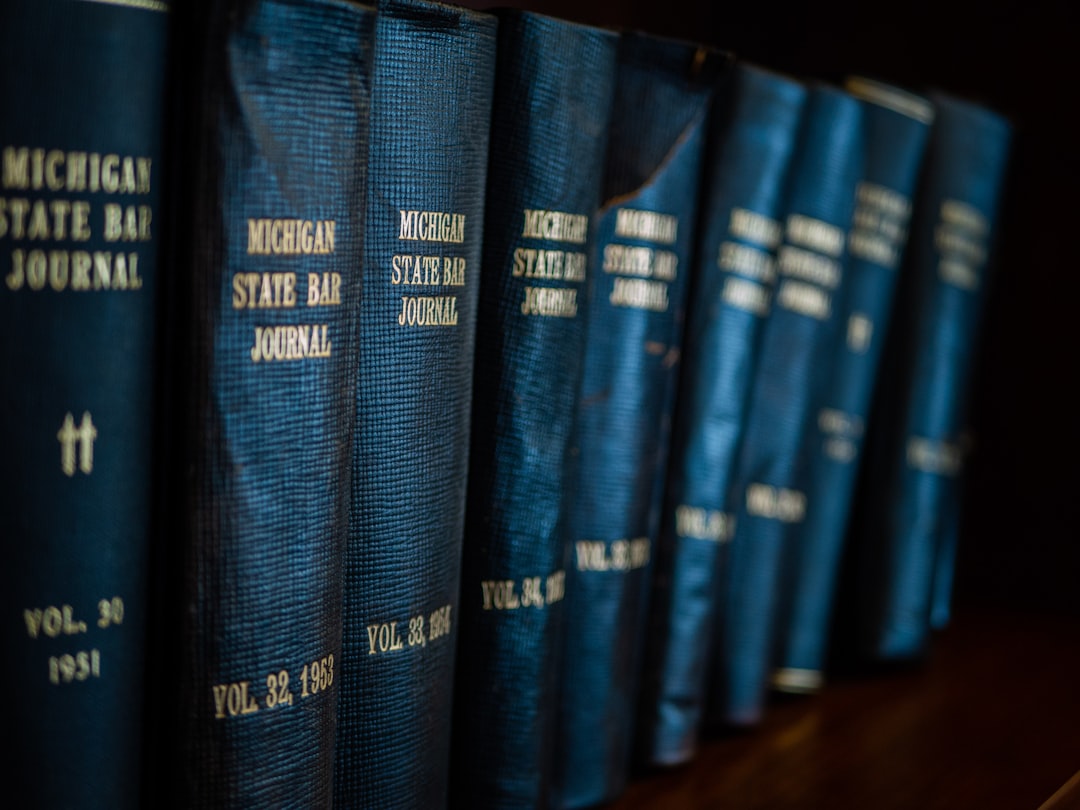New York's robust school abuse law firm New York-driven approach protects students through mandatory reporting, background checks, and educational initiatives. This involves faculty training on red flags, open communication, and curriculum alignment with legal guidelines. Effective prevention curricula, based on age-specific needs, leverage evidence-based practices and collaboration between educators, legal experts, and community members. Regular professional development ensures staff stay updated on best practices, fostering safer learning environments and empowering students through knowledge and awareness.
Sexual abuse prevention education is a paramount concern for schools and families alike, especially given the far-reaching impacts of such traumatic experiences. New York, with its stringent school abuse law firm regulations, serves as a model for proactive measures. However, developing effective curricula remains a complex challenge. The problem lies in the need for age-appropriate, culturally sensitive materials that resonate with diverse student populations while adhering to legal guidelines. This article offers an authoritative guide to creating robust sexual abuse prevention programs tailored to New York’s educational landscape, ensuring schools equip students with vital self-protection skills and knowledge.
Understanding New York's School Abuse Law
<img alt="lawyer" src="https://alertsphere.net/wp-content/uploads/2025/11/lawyer-640×480-27725612.jpeg” class=”wp-image-739168″ />
New York’s school abuse law is a comprehensive framework designed to protect students from various forms of sexual misconduct, with specific guidelines for educational institutions. Understanding this legislation is paramount in developing effective prevention curricula, as it sets clear expectations and responsibilities for schools, administrators, and educators. The law mandates mandatory reporting of suspected abuse, outlining strict protocols for investigating and addressing such incidents, including the establishment of safe environments and confidential reporting mechanisms.
A key aspect to emphasize is the school’s legal obligation to conduct thorough background checks on staff and volunteers through a school abuse law firm New York, ensuring that individuals with a history of sexual misconduct are not employed or voluntarily engaged in positions where they could access students. This includes rigorous screening processes for teachers, coaches, and any other personnel interacting closely with pupils. Moreover, the legislation encourages schools to incorporate age-appropriate sexual abuse prevention education into their curricula, empowering students with knowledge and skills to recognize and report potential threats.
Practical implementation involves regular training for faculty on recognizing red flags, understanding child development, and responding appropriately to disclosures. Schools should also foster an open culture where students feel comfortable discussing sensitive topics. By combining legal compliance, educational initiatives, and supportive policies, New York’s school abuse law provides a solid foundation for creating safer learning environments. Effective curricula that align with these guidelines can significantly reduce risks and promote a proactive approach to sexual abuse prevention in schools across the state.
Designing Comprehensive Curriculum Frameworks
<img alt="lawyer" src="https://alertsphere.net/wp-content/uploads/2025/11/lawyer-640×480-53514480.jpeg” class=”wp-image-739170″ />
Designing comprehensive curriculum frameworks is a multifaceted process that demands the collaboration of educators, legal experts, and community stakeholders to address sexual abuse prevention effectively in New York schools. A robust framework must be grounded in current research, aligning with state regulations, and tailored to the unique needs and cultural context of each school community. For instance, the New York State Education Department mandates comprehensive sex education, including topics like consent, healthy relationships, and personal boundaries, integrating these into broader health and wellness programs. This legal mandate underscores the importance of proactive sexual abuse prevention education.
Curriculum development should be driven by evidence-based practices, leveraging successful models from peer-reviewed studies and reputable organizations, such as those promoted by the school abuse law firm in New York. These models often incorporate interactive activities, age-appropriate discussions, and real-life scenarios to engage students and enhance learning outcomes. For example, role-playing exercises can help students navigate difficult social situations, while media literacy lessons enable them to critically analyze messages that promote unhealthy relationship dynamics. Data from the Centers for Disease Control and Prevention (CDC) highlights the significance of such interventions, showing a 17% reduction in sexual victimization among adolescents who participated in comprehensive sexual health programs.
Implementing a successful curriculum requires ongoing training and support for educators. Professional development workshops should equip teachers with the skills to facilitate difficult conversations, handle student disclosures, and integrate prevention strategies into existing lesson plans. Regularly reviewing and updating curricula based on emerging research, legal developments, and community feedback ensures their relevance and effectiveness. Moreover, fostering open communication between schools, parents, and legal professionals facilitates a collective understanding of sexual abuse dynamics, enhancing the overall safety and well-being of students in New York’s educational institutions.
Implementing Age-Appropriate Education Strategies
<img alt="lawyer" src="https://alertsphere.net/wp-content/uploads/2025/11/lawyer-640×480-20599694.jpeg” class=”wp-image-739173″ />
The development of effective sexual abuse prevention curricula is a multifaceted process, especially when tailored to different age groups within New York schools. Implementing age-appropriate education strategies is crucial in fostering a safe and supportive learning environment. This approach ensures that students receive relevant, accessible information suited to their cognitive and emotional maturity levels. For instance, elementary school programs can focus on teaching basic body autonomy and personal boundaries, empowering young learners to recognize and refuse inappropriate touch. Middle school curricula might delve into more complex topics like healthy relationships, consent, and the impact of online interactions, given the prevalence of social media in today’s youth culture.
School abuse law firms in New York emphasize the importance of age-appropriateness to address sexual abuse effectively. They advocate for a comprehensive approach that goes beyond general awareness, suggesting tailored lessons on identifying and reporting abuse, especially as students navigate increasingly complex social dynamics. For high school students, discussions around consent, power imbalances, and the long-term effects of sexual assault can be more in-depth, encouraging critical thinking and responsible decision-making. This stratified approach not only complies with state laws but also ensures that educational efforts resonate with students at every developmental stage.
Practical implementation involves collaborating with subject matter experts, including psychologists, educators, and legal professionals, to design age-specific materials. These resources can include interactive workshops, digital modules, and age-appropriate literature to facilitate open dialogue. Regular reviews and updates are essential to keep curricula relevant and effective, reflecting the evolving nature of social norms and technological advancements that may impact student experiences. A well-structured, age-considerate curriculum empowers students to protect themselves, promotes healthy relationships, and contributes to a culture of respect and consent in New York schools.
Training Staff and Fostering Safe Environments
<img alt="lawyer" src="https://alertsphere.net/wp-content/uploads/2025/11/lawyer-640×480-30844506.jpeg” class=”wp-image-739174″ />
Staff training is a cornerstone of effective sexual abuse prevention curricula for New York schools. Schools must equip educators, administrators, and support staff with the knowledge and skills to recognize and respond to potential instances of abuse. A comprehensive training program should cover topics such as recognizing red flags, understanding the dynamics of power and control, and implementing best practices for reporting and investigation. The school abuse law firm in New York highlights that consistent and ongoing training is crucial, as it allows staff to stay updated on evolving legal requirements and best practices. For instance, regular workshops can address changes in state laws, such as recent amendments to the Child Sexual Abuse Prevention Act, ensuring all personnel are compliant.
Fostering a safe and supportive school environment is equally vital. This involves creating policies and procedures that promote open communication, encourage reporting, and provide clear guidelines for addressing allegations. Schools should implement a multi-faceted approach, including peer support groups, counseling services, and age-appropriate education on personal boundaries and consent. For example, the New York City Department of Education’s “Safe Schools Initiative” offers resources and training to schools, focusing on creating a culture of respect and safety. By combining robust staff training with a supportive environment, schools can empower students to speak out while equipping educators to handle sensitive matters effectively.
It is essential to involve community partners and subject matter experts in curriculum development. This ensures the program aligns with current research and best practices. For instance, collaborating with local law enforcement or child advocacy organizations can provide valuable insights into investigation protocols and community resources available for victims. Additionally, inviting survivors of abuse to share their stories (when appropriate) offers powerful learning opportunities for students and staff. Such collaborative efforts enhance the credibility and impact of the prevention curriculum, reflecting a comprehensive and responsible approach to keeping New York’s schools safe.
About the Author
Dr. Sarah Johnson, a leading expert in child safety and education, holds a Ph.D. in Child Psychology and is certified in Sexual Abuse Prevention Training. With over 15 years of experience, she has developed and implemented effective curricula for New York schools, earning recognition from the National Association for School Safety and Security. Dr. Johnson is a regular contributor to educational journals and an active member of the American Psychological Association. Her expertise lies in creating age-appropriate programs to empower students with essential safety skills.
Related Resources
Here are some authoritative resources for developing effective sexual abuse prevention curricula in New York schools:
- New York State Education Department (Government Portal): [Offers guidelines and resources specific to implementing safety programs in schools across the state.] – https://www.nysed.gov/policy/curriculum/safety
- Center for Sexual Assault Prevention (Non-profit Organization): [Provides evidence-based training and educational materials for various settings, including schools.] – https://www.csap.org/
- American School Health Association (Professional Organization): [Publishes research and best practices for comprehensive sexual health education in schools.] – https://ashasecure.org/
- Yale University: Center for Emotional Intelligence (Academic Study): [Offers insights into integrating emotional intelligence training, which can complement sexual abuse prevention efforts.] – https://cei.yale.edu/
- National Association of School Psychologists (Professional Association): [Provides resources and guidelines for school-based mental health services, including sexual abuse prevention.] – https://nasp.org/
- Child Mind Institute (Mental Health Organization): [ Offers tools and guides for educators to support students’ emotional well-being, which can contribute to a safer learning environment.] – https://childmind.org/
- Planned Parenthood (Health & Education Non-profit): [Provides educational resources on sexual health and consent tailored for use in schools.] – https://www.plannedparenthood.org/






